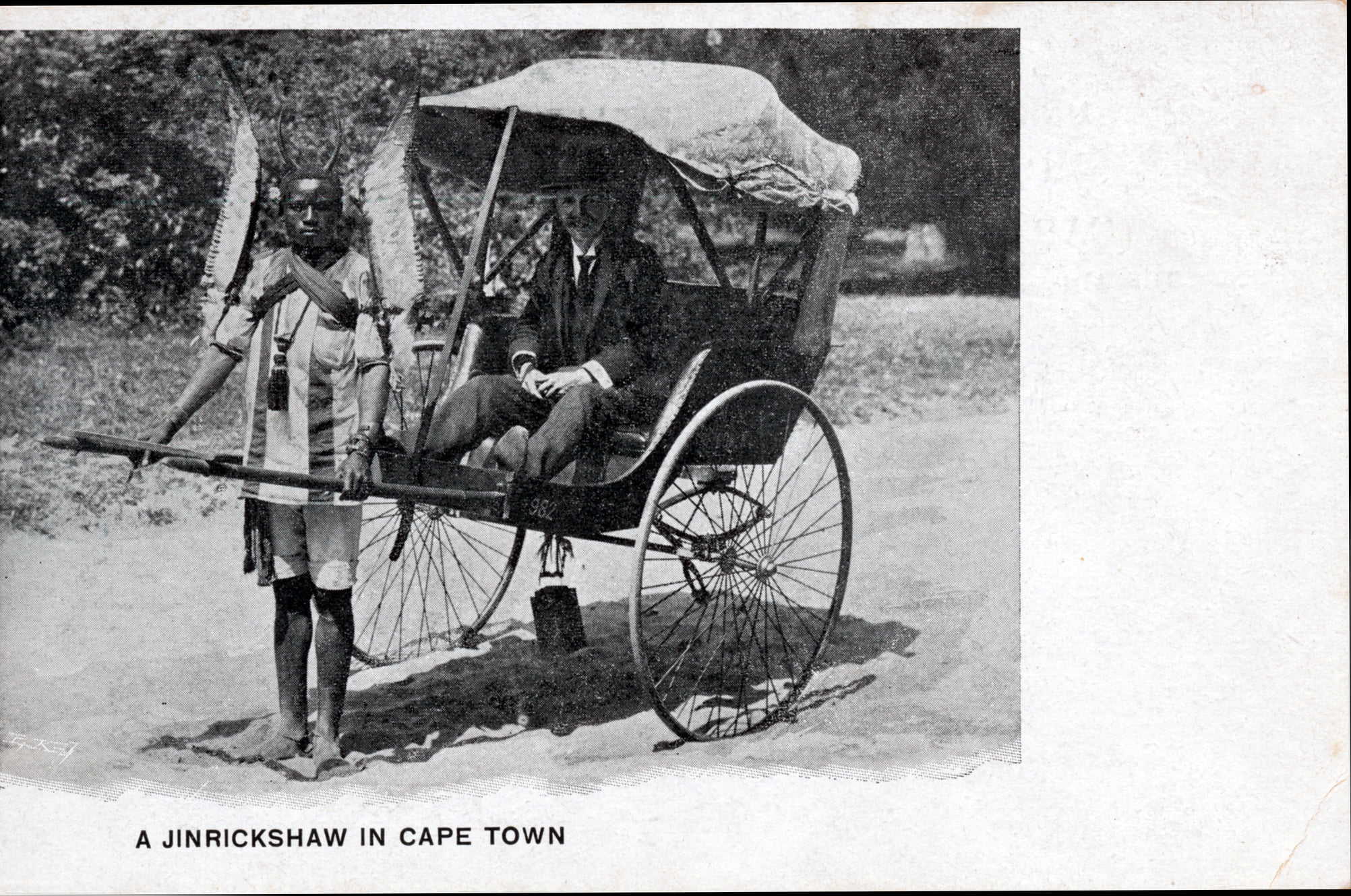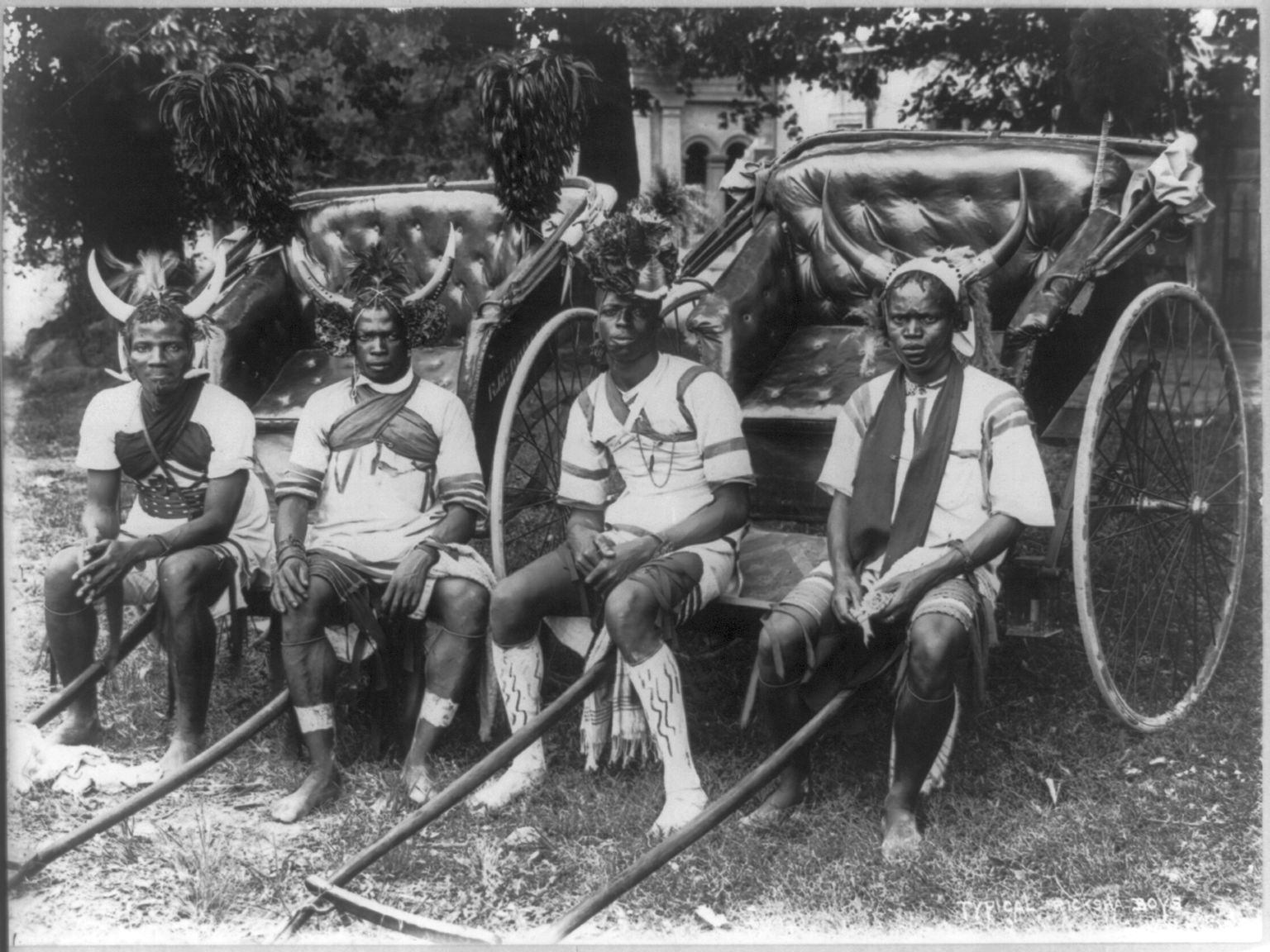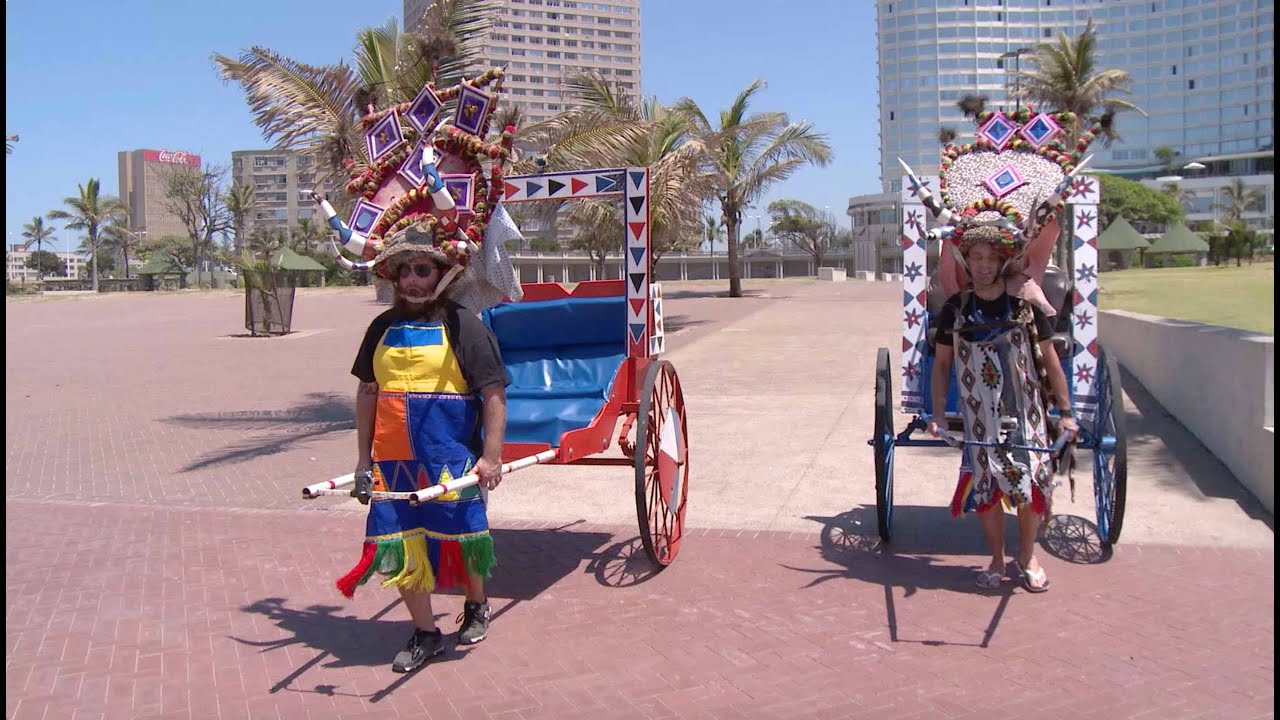
“A jinrickshaw in Cape Town”, from the Cape of Diab Facebook group
In the past albatrosses and their eggs were exploited in various ways, mainly for food, but also for cultural purposes, as notably occurred in Hawaii (to be covered in a future post).
A hitherto unreported cultural (or at least decorative) use is depicted in an old postcard that has recently come to light. Thought to be from around 1900 (late Victorian/early Edwardian), the photo from South Africa’s Cape Town shows a rickshaw puller with a pair of yellow-nosed albatross wings (not identifiable to species) strapped to his upper arms. This is the only known case of such a use found. Perhaps he found them washed up on the shore, or obtained them from a fishing vessel. In the same era, rickshaw pullers in South Africa tended to a cow horn head dress, presumably as an aid to attracting clients. Just a few rickshaws survive in the country in Durban, aimed at the tourist trade.
Headdresses worn by Durban rickshaw pullers: past and present
With thanks to Michael Fortune and Peter Ryan.
John Cooper, ACAP Information Officer, 04 December 2020

 Español
Español  English
English  Français
Français 
